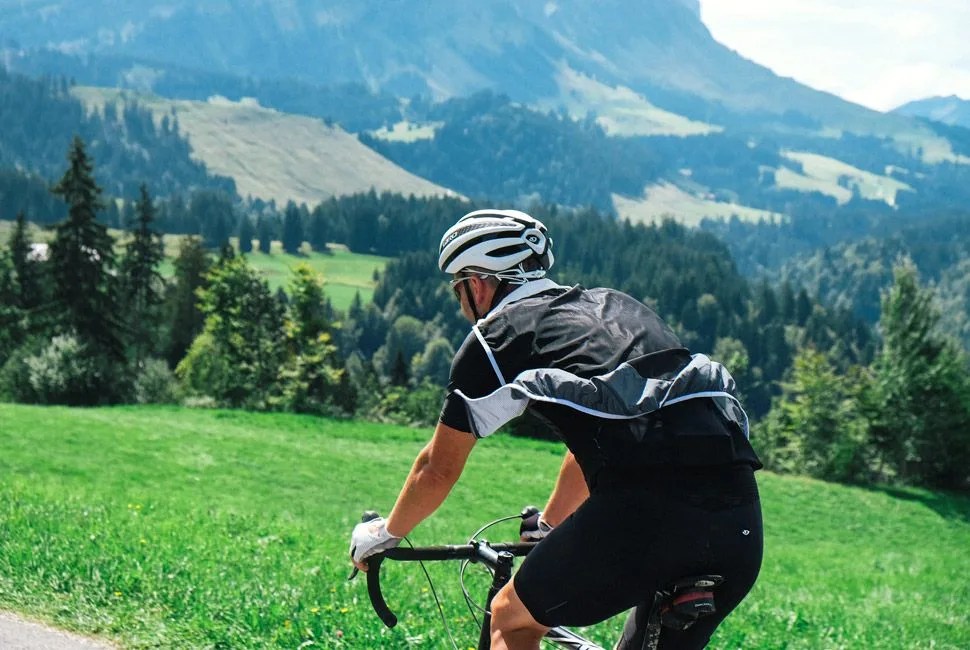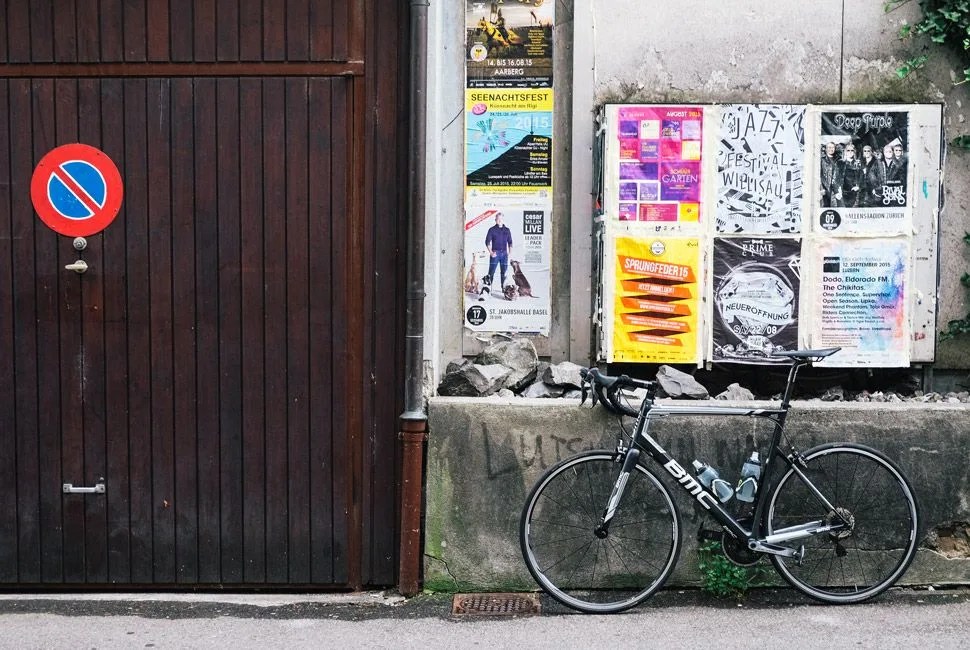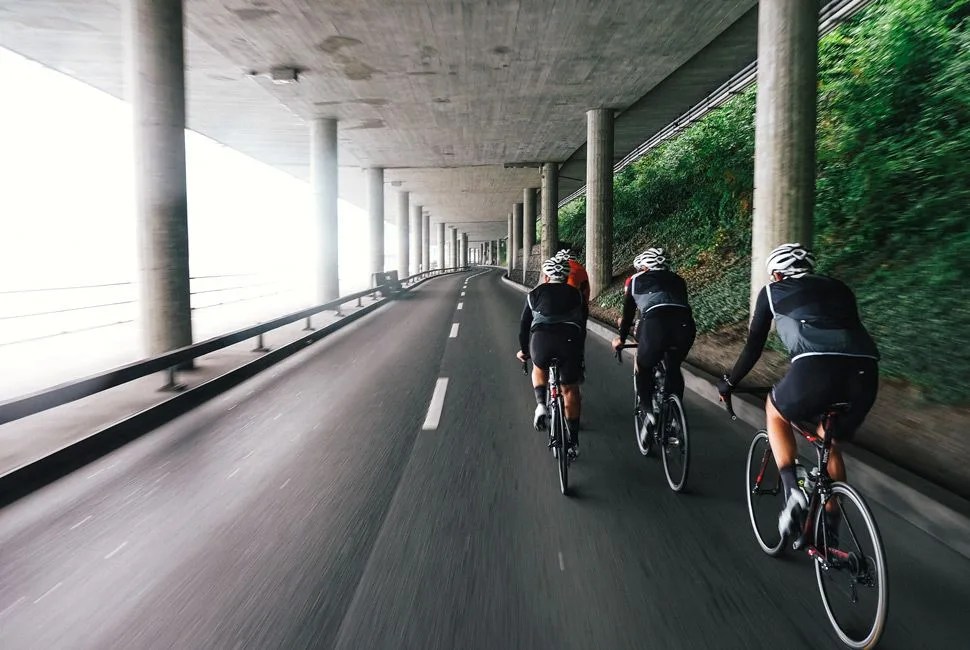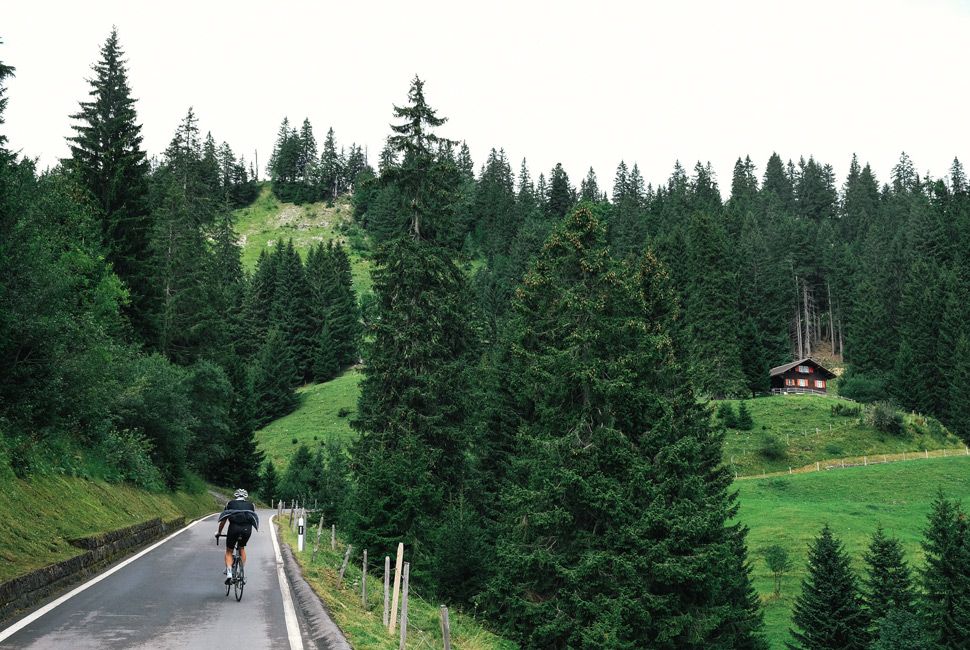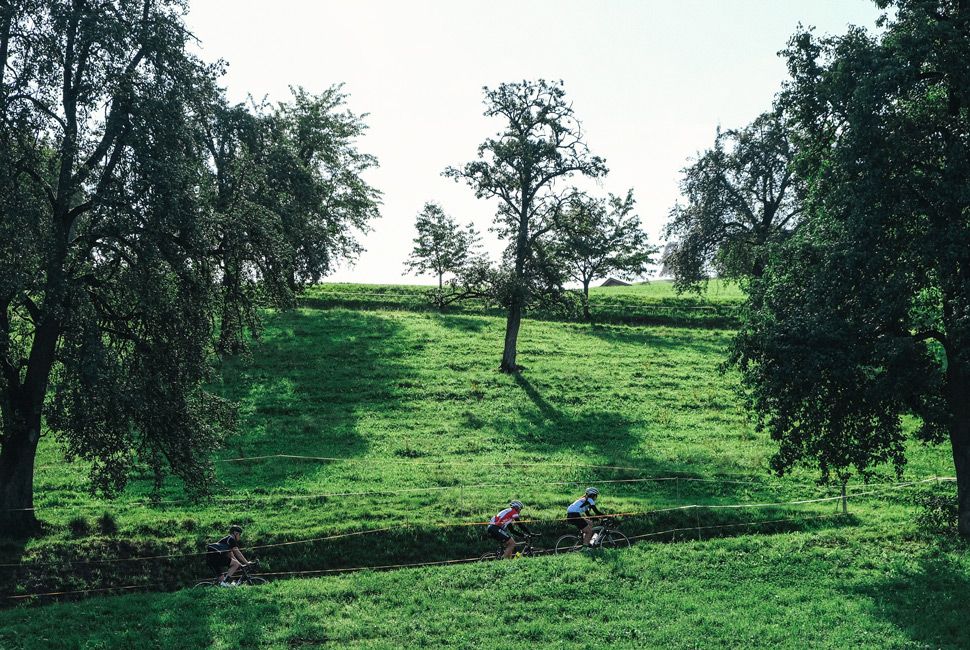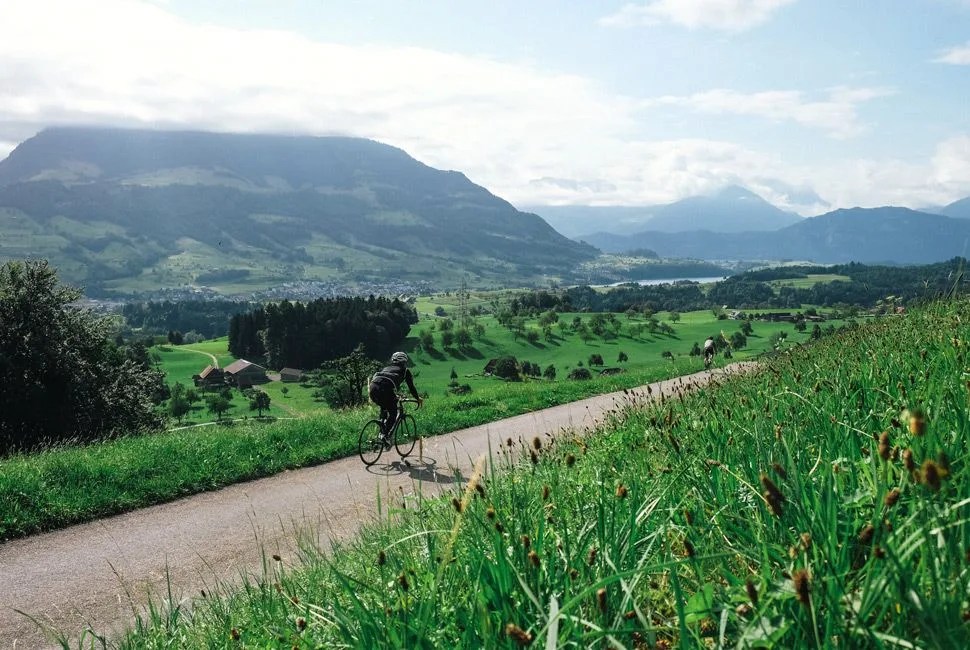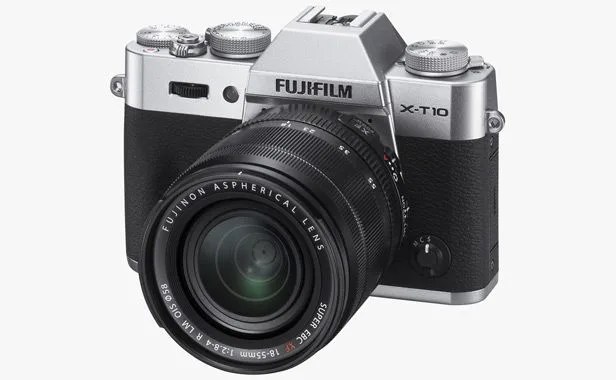24 photos
Amid the clean, modern minimalism of the Zürich airport, the tram’s speaker system, mid-ride, supplies an entirely opposite, anachronistic Swiss experience. As we fly through dark tunnels of rock, quiet audio of cowbells, bovine mooing and a distinct yodel pipes out of the stereo system. The experience is disorienting. It feels like a schtick — a Disneyland curiosity among the clean, cold world of modern Europe.
A day later, in the mountains outside Lucerne, the noises one hears are actual cows with actual cowbells and their ecstatic or perturbed (who knows a cow’s mind?) mooing. The yodeling, in this situation, comes from pains of exertion as a group of cyclists wrangled lightweight, carbon, Swiss bicycles up a 12-kilometer climb with an average incline of 9 percent.
The Swiss countryside is a parody of itself — every stereotype comes true. The chalets have A-frame sloped roofs and their windows are bedecked with flowers. Hillsides are a shade of green so saturated it looks digitally enhanced. Bus stop benches at 5,320 feet are painted a crisp, bright Swiss red. White clouds shroud far-off mountain peaks and the blue sky, when it does break through, is crisp, gorgeous, untainted.
If those roads weren’t so perfectly paved, and if the hillsides weren’t so vibrantly green, and if the rivers and streams didn’t offer such auditory respite from your own hard breathing, it might actually be miserable.
All this is easy enough to observe from a seat on a tourist bus. But it’s on a big day of riding — with 83 miles and 7,700 feet of climbing — that Switzerland really comes into perspective. These careening switchbacks that wind their way into the cloud cover, they must be labored over to be enjoyed. And if those roads weren’t so perfectly paved, and if the hillsides weren’t so vibrantly green, and if the rivers and streams didn’t offer such auditory respite from your own hard breathing, it might actually be miserable.
There came a point on the second big effort of the day — a 16-kilometer climb with an average of 6 percent grade — when the phrase “dig deep” was redefined and every leg muscle was left pondering its potential. And yet, as a cyclist and an entry-level aesthete, despite the pain and the suffering and the aches and the extremely sore ass, I felt there was quite literally no other place to be.

